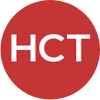6 Strategies for Navigating a Multigenerational Workforce
The healthcare industry is a melting pot of generations, with employees spanning from Gen Z (born as early as 1997) to baby boomers who may be nearing retirement. These diverse age groups bring unique perspectives, skills, and expectations to the workplace.
For healthcare leaders, managing a multigenerational workforce presents both a challenge and an opportunity. It requires thoughtful leadership to balance the needs of all team members while ensuring quality patient care.
Here are a handful of strategies for leaders to successfully navigate the dynamics of their multigenerational teams so that all employees can thrive:
1. Foster a Culture of Mutual Respect
Creating a workplace culture built on respect is foundational to team harmony, regardless of age. For example, younger employees often bring fresh ideas and technological fluency, while seasoned team members contribute institutional knowledge and mentorship.
Leaders can encourage mutual learning through initiatives like reverse mentoring programs, where knowledge-sharing flows in both directions.
2. Tailor Communication Styles
Generational preferences often influence communication styles. Younger employees may prefer quick, tech-based interactions, while older generations may value in-person discussions or detailed emails. Train managers to adapt their communication methods to meet the needs of their teams and create guidelines that effectively blend traditional and modern approaches.
3. Invest in Flexible Work Options
Flexibility is a key factor for most generations, albeit for different reasons. While remote work isn’t always an option in healthcare, finding opportunities to provide flexible hours can benefit employees of different generations in various ways. For all employees, providing a range of options not only boosts morale but also enhances employee retention.
4. Provide Targeted Professional Development
While all generations value professional growth, their priorities may vary based on where they’re at in their career. Gen Z and millennials might prioritize training programs and career advancement opportunities, while Gen X and baby boomers may prefer leadership development or opportunities to deepen their expertise. Customize training and development programs to reflect these varied interests.
5. Bridge the Technology Gap
Younger employees often excel with advanced technology, while older employees may benefit from additional training to adapt to new tools. Try to meet your team members where they are. For those who are more tech-savvy, perhaps this means incorporating technology into reporting functionality and automation. For those on the other end of the spectrum, implement user-friendly systems and offer comprehensive training sessions. The goal is to ensure everyone can work effectively and confidently.
6. Balance Work Styles and Values
Generational differences often extend to work styles. While some may prefer a more fluid, collaborative approach, others might lean toward structured autonomy.
Leaders can encourage teams to find common ground by setting clear goals and encouraging flexible problem-solving methods that incorporate input from all members.
Harnessing the Strengths of a Multigenerational Workforce
Age diversity in healthcare is a strength that offers a blend of innovation, expertise, and adaptability. Leaders who proactively address generational differences while fostering mutual respect can harness this diversity to improve team dynamics and performance, ultimately enhancing patient outcomes.


